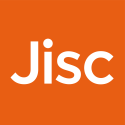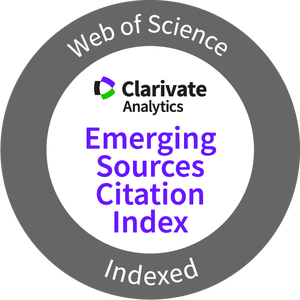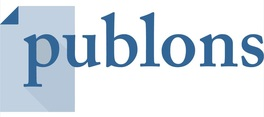La relación entre la gestión deportiva y el ámbito de la discapacidad: Un análisis bibliométrico
Resumen
La relación entre la gestión deportiva y el ámbito de la discapacidad ha ido ganando interés en los últimos años. El número de personas con discapacidad que practican deporte ha aumentado significativamente, y los objetivos de la gestión deportiva se han centrado en promover la participación y mejorar la salud y el bienestar de las personas con discapacidad. Este trabajo analiza los artículos publicados en la Web of Science sobre la práctica deportiva para personas con discapacidad y el ámbito de la gestión deportiva. El análisis bibliométrico nos permite descubrir el estado actual de un campo de investigación, identificar a los principales autores, artículos y temas, y proponer futuras líneas de investigación para desarrollarlo aún más. Los artículos publicados entre 1999 y 2022 se analizaron cuantitativamente y por co-ocurrencia de palabras y autores. Posteriormente, a través del enlace bibliográfico, los artículos se agruparon en diferentes clústeres. Se encontraron cuatro temas centrales, siendo las áreas de marketing y eventos deportivos las más desarrolladas.Este estudio proporciona una base para futuras investigaciones sobre la práctica deportiva para personas con discapacidad en el campo de gestión deportiva. Los resultados de este estudio pueden ayudar a mejorar la participación de las personas con discapacidad en el deporte, y mejorar su salud y bienestar.
Descargas
-
Resumen358
-
PDF189
Citas
Abellán, J., Sáez-Gallego, N. M., & Carrión Olivares, S. (2018). La boccia como deporte adaptado y sensibilizador en Educación Física en Educación Secundaria. SPORT TK-Revista EuroAmericana de Ciencias del Deporte, 7(2), 109–114. https://doi.org/10.6018/sportk.343011
Aria, M., & Cuccurullo, C. (2017). Bibliometrix: An R-tool for comprehensive science mapping analysis. Journal of Informetrics, 11(4), 959-975.
Bartolacci, F., Caputo, A., & Soverchia, M. (2020). Sustainability and financial performance of small and medium sized enterprises: A bibliometric and systematic literature review. Business Strategy and the Environment, 29(3), 1297-1309.
Beacom, A., French, L., & Kendall, S. (2016). Reframing impairment? Continuity and change in media representations of disability through the Paralympic Games. International Journal of Sport Communication, 9(1), 42-62.
Blauwet, C., & Willick, S. E. (2012). The Paralympic Movement: using sports to promote health, disability rights, and social integration for athletes with disabilities. Physical Medicine & Rehabilitation Journal, 4(11), 851-856.
Boquera J. M., Martínez-Rico G, Pérez-Campos C., Prado-Gascó V. J. (2016). Evaluation of sporting events by disabled athletes: Individual contribution (regression models) vs. Interaction (QCA). Revista de psicología del deporte, 25(1), 85-88.
Bradbury, T., Mitchell, R., & Thorn, K. (2021). Moving forward: business model solutions for amateur sport clubs. Managing Sport and Leisure, 26(3), 189-205.
Carroll, P., Witten, K., & Duff, C. (2021). "How can we make it work for you?" Enabling sporting assemblages for disabled young people. Social Science & Medicine, 288, 1-15. https://doi.org/10.1016/j.socscimed.2020.113213
Chaudhry, I. S., Paquibut, R. Y., & Tunio, M. N. (2021). Do workforce diversity, inclusion practices, & organizational characteristics contribute to organizational innovation? Evidence from the UAE. Cogent Business & Management, 8(1), 1947549.
Cherney, J. L., Lindemann, K., & Hardin, M. (2015). Research in communication, disability, and sport. Communication & Sport, 3(1), 8-26.
Di Palma, D., Raiola, G., & Tafuri, D. (2016). Disability and Sport Management: a systematic review of the literature. Journal of Physical Education and Sport, 16(3), 785.
Dickson, T. J., Misener, L., & Darcy, S. (2017). Enhancing destination competitiveness through disability sport event legacies: Developing an interdisciplinary typology. International Journal of Contemporary Hospitality Management, 29(3), 924-946.
Fitzgerald, H. (2012). Paralympic athletes and “knowing disability”. International Journal of Disability, Development, and Education, 59, 243–255.
Fuente-Robles, Y. M. D. L., Muñoz-de-Dios, M. D., Mudarra-Fernández, A. B., & Ricoy-Cano, A. J. (2020). Understanding stakeholder attitudes, needs and trends in accessible tourism: A systematic review of qualitative studies. Sustainability, 12(24), 1-23.
Fujimoto, Y., Rentschler, R., Le, H., Edwards, D., & Härtel, C. E. (2014). Lessons learned from community organizations: Inclusion of people with disabilities and others. British Journal of Management, 25(3), 518-537.
Ginis, K. A. M., van der Ploeg, H. P., Foster, C., Lai, B., McBride, C. B., Ng, K., ... & Heath, G. W. (2021). Participation of people living with disabilities in physical activity: a global perspective. The Lancet, 398(10298), 443-455. https://doi.org/10.1016/S0140-6736(21)01164-8
González-García, R. J., Martínez-Rico, G., Bañuls-Lapuerta, F., & Calabuig, F. (2022). Residents’ Perception of the Impact of Sports Tourism on Sustainable Social Development. Sustainability, 14(3), 1-16.
González-García, R. J., Martínez-Rico, G., Escorcia-Mora, C., & García-Grau, P. (2023). A Bibliometric Study on the Social Validity of Telepractice in Autism Spectrum Disorder. International Journal of Environmental Research and Public Health, 20(1), 1-18. https://doi.org/10.3390/ijerph20010419
González-Serrano, M. H., Añó Sanz, V., & González-García, R. J. (2020). Sustainable sport entrepreneurship and innovation: A bibliometric analysis of this emerging field of research. Sustainability, 12(12), 1-17.
Hammond, A. M., Bundon, A., Gadd, C. P., & Konoval, T. (2021). Enactments of integrated, disability-inclusive sport policy by sporting organizations. Sociology of Sport Journal, 39(1), 35-46.
Hammond, A., Jeanes, R., Penney, D., & Leahy, D. (2019). “I feel we are inclusive enough”: Examining swimming coaches’ understandings of inclusion and disability. Sociology of Sport Journal, 36(4), 311-321.
Huang, C. J., & Brittain, I. (2006). Negotiating identities through disability sport. Sociology of Sport Journal, 23(4), 352-375.
Hutzler, Y., & Korsensky, O. (2010). Motivational correlates of physical activity in persons with an intellectual disability: a systematic literature review. Journal of Intellectual Disability Research, 54(9), 767-786. https://doi.org/10.1111/j.1365-2788.2010.01313.x
Jeanes, R., Spaaij, R., Magee, J., Farquharson, K., Gorman, S., & Lusher, D. (2018). ‘Yes we are inclusive’: Examining provision for young people with disabilities in community sport clubs. Sport Management Review, 21(1), 38–50.
Kissow, A. M. (2015). Participation in physical activity and the everyday life of people with physical disabilities: a review of the literature. Scandinavian Journal of Disability Research, 17(2), 144-166.
Kitchin, P. J., & Howe, P. D. (2014). The mainstreaming of disability cricket in England and Wales: Integration ‘one game’ at a time. Sport Management Review, 7(1), 65–77. https://doi.org/10.1016/j.smr.2013.05.003
Kolotouchkina, O., Llorente-Barroso, C., García-Guardia, M. L., & Pavón, J. (2020). Disability, sport, and television: Media visibility and representation of Paralympic Games in news programs. Sustainability, 13(1), 1-13.
Macdougall, H. K., Nguyen, S. N., & Karg, A. J. (2014). ‘Game, Set, Match’: An exploration of congruence in Australian disability sport sponsorship. Sport Management Review, 17(1), 78-89.
Martin, J. J. (2013). Benefits and barriers to physical activity for individuals with disabilities: a social-relational model of disability perspective. Disability and Rehabilitation, 35(24), 2030-2037.
Masdeu Yelamos, G., Carty, C., & Clardy, A. (2019). Sport: A driver of sustainable development, promoter of human rights, and vehicle for health and well-being for all. Sport, Business and Management: An International Journal, 9(4), 315-327.
McBean, C., Townsend, R. C., & Petrie, K. (2022). An historical analysis of disability sport policy in Aotearoa New Zealand. International Journal of Sport Policy and Politics, 14(3), 419-434.
McPherson, G., O’Donnell, H., McGillivray, D., & Misener, L. (2016). Elite athletes or superstars? Media representation of para-athletes at the Glasgow 2014 Commonwealth Games. Disability & Society, 31(5), 659-675.
Misener, K., & Doherty, A. J. (2009). A case study of organizational capacity in nonprofit community sport. Journal of Sport Management, 23(4), 457–482.
Misener, L., Di Lu, L., & Carlisi, R. (2020). Leveraging events to develop collaborative partnerships: Examining the formation and collaborative dynamics of the Ontario Parasport Legacy Group. Journal of Sport Management, 34(5), 447-461.
Page, M. J., McKenzie, J. E., Bossuyt, P. M., Boutron, I., Hoffmann, T. C., Mulrow, C. D., Shamseer, L., Tetzlaff, J. M., Akl, E. A., Brennan, S. E., Chou, R., Glanville, J., Grimshaw, J. M., Hróbjartsson, A., Lalu, M. M., Li, T., Loder, E. W., Mayo-Wilson, E., McDonald, S., McGuinness, L. A., … Moher, D. (2021). The PRISMA 2020 statement: an updated guideline for reporting systematic reviews. BMJ (Clinical research ed.), 372, n71. https://doi.org/10.1136/bmj.n71
Paradis, K. F., Misener, L. J., McPherson, G., McGillivray, D., & Legg, D. (2017). Examining the impact of integrated and non-integrated parasport events on volunteer attitudes towards disability. Sport in Society, 20(11), 1724-1744.
Paramio-Salcines, J. L., & Kitchin, P. J. (2013). Institutional perspectives on the implementation of disability legislation and services for spectators with disabilities in European professional football. Sport Management Review, 16(3), 337-348.
Patatas, J. M., De Bosscher, V., De Cocq, S., Jacobs, S., & Legg, D. (2021). Towards a system theoretical understanding of the parasport context. Journal of Global Sport Management, 6(1), 87-110.
Patatas, J. M., De Bosscher, V., Derom, I., & De Rycke, J. (2020). Managing parasport: An investigation of sport policy factors and stakeholders influencing para-athletes’ career pathways. Sport Management Review, 23(5), 937-951.
Perkin, S. J., & Howe, P. D. (2017). A Foucauldian interpretation of Paralympic Sport in the United Arab Emirates: An exploration through a virtual lens. The International Journal of the History of Sport, 34(13), 1418-1435.
Pitts, B. G., & Shapiro, D. R. (2017). People with disabilities and sport: An exploration of topic inclusion in sport management. Journal of Hospitality, Leisure, Sport & Tourism Education, 21, 33-45.
Powis, B., & Macbeth, J. L. (2020). “We know who is a cheat and who is not. But what can you do?”: Athletes’ perspectives on classification in visually impaired sport. International Review for the Sociology of Sport, 55(5), 588-602.
Rees, L., Robinson, P., & Shields, N. (2018). A major sporting event or an entertainment show? A content analysis of Australian television coverage of the 2016 Olympic and Paralympic Games. Sport in Society, 21(12), 1974-1989.
Rieser, R. (2012). Implementing inclusive education: a Commonwealth guide to implementing Article 24 of the UN Convention on the Rights of Persons with Disabilities. Commonwealth Secretariat.
Romarate, A., Granados, C., Iturricastillo, A., Lizundia, M., & Yanci Irigoyen, J. (2020). Asociación entre las características antropométricas y la condición física en jugadores de baloncesto en silla de ruedas. SPORT TK-Revista EuroAmericana de Ciencias del Deporte, 9(2), 17–26. https://doi.org/10.6018/sportk.431081
Sangucho Hidalgo, N. P., Rivadeneira Arias, K. N., & Aguilar Morocho, E. K. (2022). Biomecánica aplicada a la técnica de salto de longitud de la medallista paralímpica Kiara Rodríguez. SPORT TK-Revista EuroAmericana de Ciencias del Deporte, 11, 1-14. https://doi.org/10.6018/sportk.523841
Shapiro, D. R., & Pitts, B. G. (2014). What little do we know: Content analysis of disability sport in sport management literature. Journal of Sport Management, 28(6), 657–671. http://dx.doi.org/10.1123/JSM.2013-0258
Sherlaw, W., & Hudebine, H. (2015). The United Nations Convention on the Rights of Persons with Disabilities: Opportunities and tensions within the social inclusion and participation of persons with disabilities. Alter, 9(1), 9-21.
Siegfried, N. (2022). Relationship marketing: a strategy for acquiring long-term strategic sponsorships in the disability sport sector. Sport Management Review, 26(2), 1-21.
Sierra-Díaz, M. J., González-Víllora, S., Pastor-Vicedo, J. C., & López-Sánchez, G. F. (2019). Can We Motivate Students to Practice Physical Activities and Sports Through Models-Based Practice? A Systematic Review and Meta-Analysis of Psychosocial Factors Related to Physical Education. Frontiers in Psychology, 10, 1-24. https://doi.org/10.3389/fpsyg.2019.02115
Skinner, J., Zakus, D. H., & Cowell, J. (2008). Development through sport: Building social capital in disadvantaged communities. Sport Management Review, 11(3), 253-275.
Smith, B., & Bundon, A. (2018). Disability models: Explaining and understanding disability sport in different ways. In I. Brittain, & A. Beacom (Eds.), Handbook of paralympic studies (pp. 15–33). London, England: Palgrave.
Spaaij, R., Knoppers, A., & Jeanes, R. (2020). “We want more diversity but…”: Resisting diversity in recreational sports clubs. Sport Management Review, 23(3), 363-373.
Thomas, N., & Smith, A. (2009). Disability, sport and society: An introduction. London, England: Routledge.
Townsend, R. C., Smith, B., & Cushion, C. J. (2015). Disability sports coaching: Towards a critical understanding. Sports Coaching Review, 4(2), 80-98.
Wicker, P., & Breuer, C. (2014). Exploring the organizational capacity and organizational problems of disability sport clubs in Germany using matched pairs analysis. Sport Management Review, 17(1), 23-34.
Winnick, J.P., & Porretta, D.L. (2017). Adapted physical education and sports (6th ed.). Human Kinetics.
Las obras que se publican en esta revista están sujetas a los siguientes términos:
1. El Servicio de Publicaciones de la Universidad de Murcia (la editorial) conserva los derechos patrimoniales (copyright) de las obras publicadas, y favorece y permite la reutilización de las mismas bajo la licencia de uso indicada en el punto 2.
© Servicio de Publicaciones, Universidad de Murcia, 2013
2. Las obras se publican en la edición electrónica de la revista bajo una licencia Creative Commons Reconocimiento-NoComercial-SinObraDerivada 3.0 España (texto legal). Se pueden copiar, usar, difundir, transmitir y exponer públicamente, siempre que: i) se cite la autoría y la fuente original de su publicación (revista, editorial y URL de la obra); ii) no se usen para fines comerciales; iii) se mencione la existencia y especificaciones de esta licencia de uso.
3. Condiciones de auto-archivo. Se permite y se anima a los autores a difundir electrónicamente las versiones pre-print (versión antes de ser evaluada) y/o post-print (versión evaluada y aceptada para su publicación) de sus obras antes de su publicación, ya que favorece su circulación y difusión más temprana y con ello un posible aumento en su citación y alcance entre la comunidad académica.



















